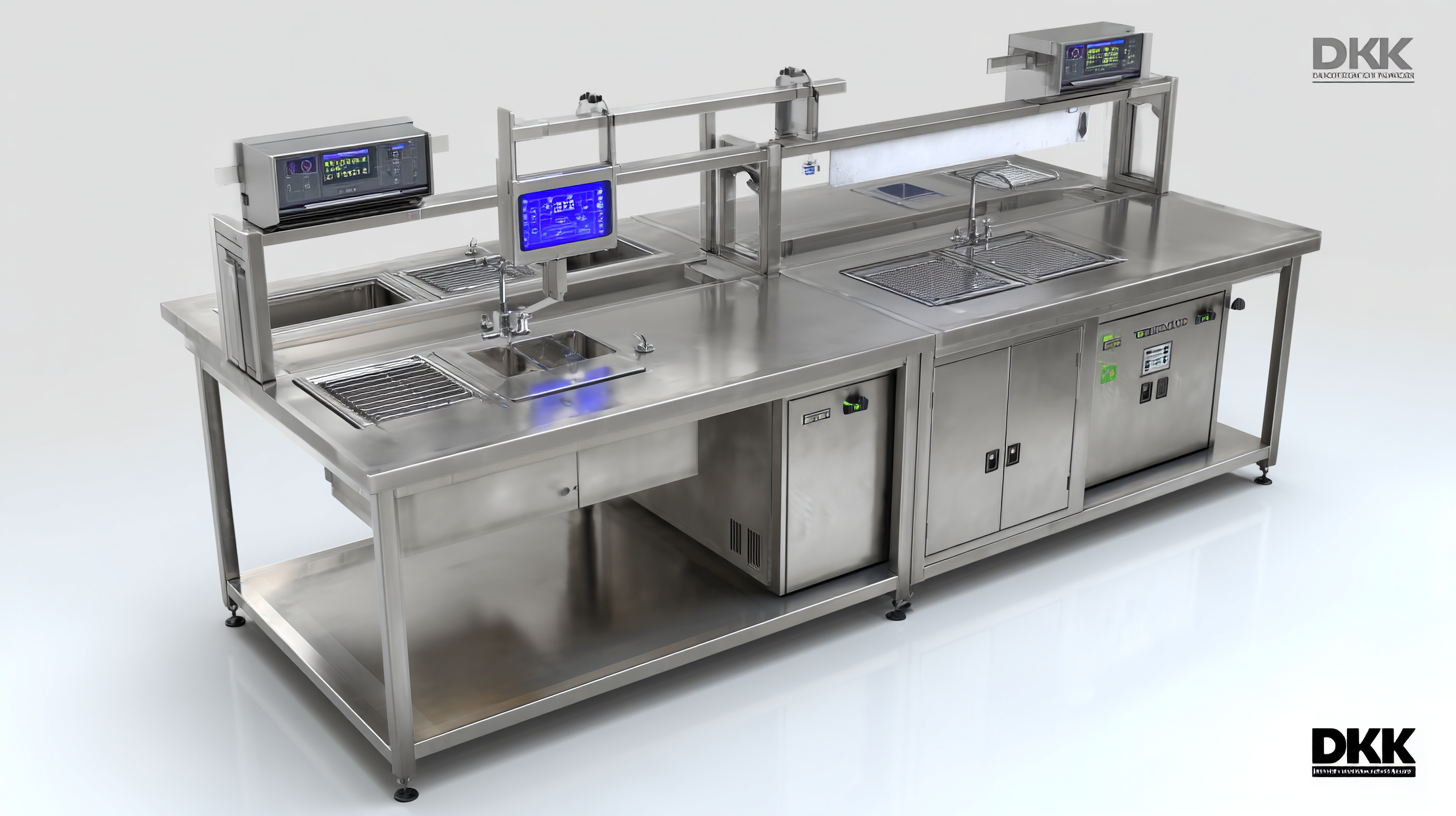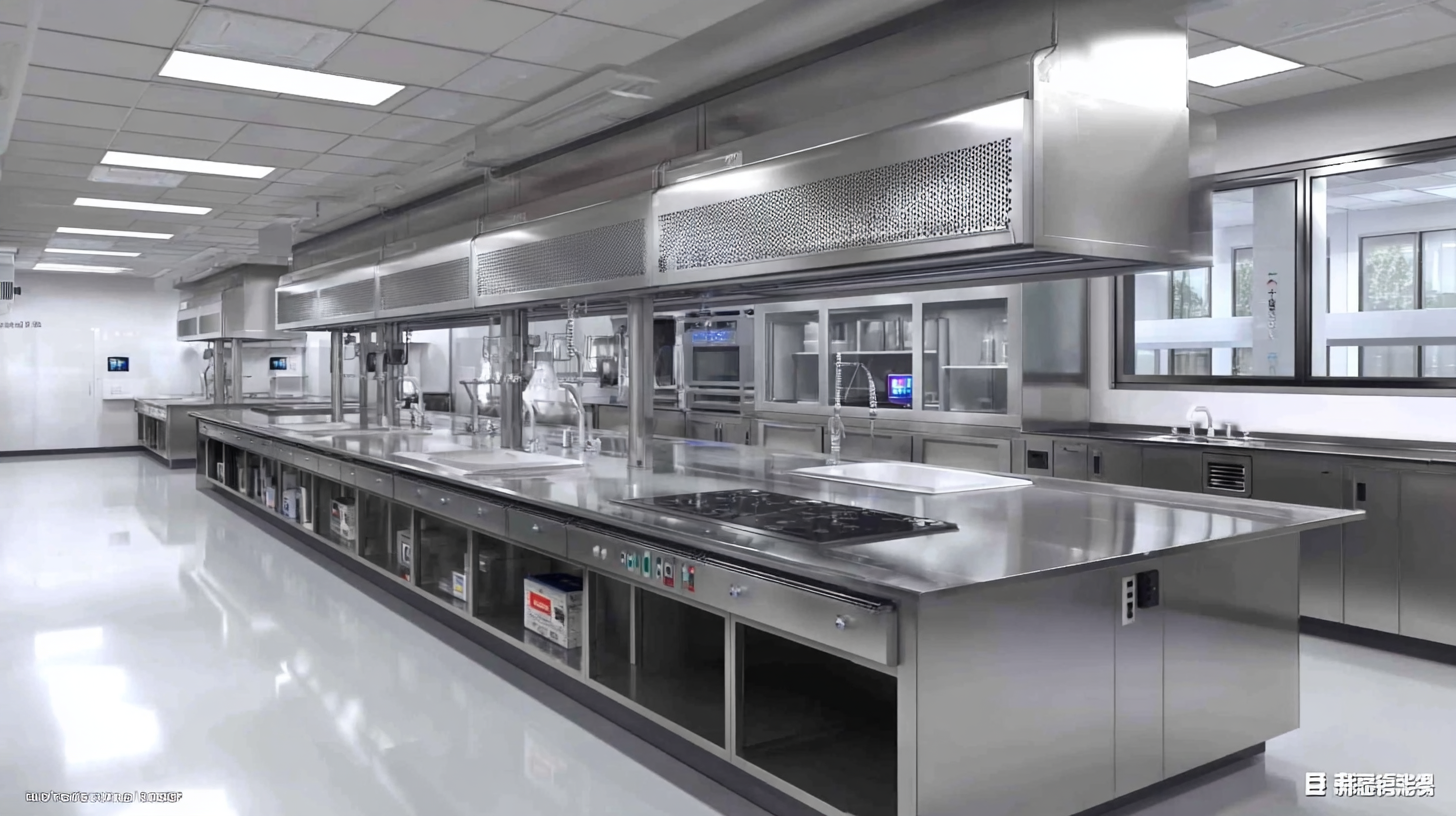In the evolving landscape of laboratory design, the demand for high-quality Stainless Steel Lab Benches has surged significantly, driven by an ever-increasing emphasis on hygiene, durability, and functionality. According to a recent industry report by Technavio, the global laboratory furniture market is projected to grow by over 4% annually through 2025, with stainless steel solutions leading the charge due to their corrosion resistance and ease of maintenance. Labs across pharmaceuticals, biotech, and research sectors are increasingly prioritizing versatile and robust designs that can withstand daily challenges while enhancing workflow efficiency. Selecting the right manufacturer becomes critical in this context, as quality and innovation play pivotal roles in the long-term performance of Stainless Steel Lab Benches. This blog will guide you through the essentials of choosing a premier manufacturer while spotlighting the best practices in lab bench design for future innovation.

The landscape of stainless steel lab bench design is evolving, driven by the need for innovation that caters to increasingly stringent hygiene and performance standards in laboratory environments. With over 40 years of expertise in designing stainless steel furniture for hygienic spaces, manufacturers are now focusing on creating versatile and adaptable lab benches. This shift not only addresses practical needs but also anticipates future trends in laboratory practices, such as the growing emphasis on modularity and space optimization.
In conjunction with advancements in design, the market for stainless steel equipment remains robust. Reports indicate that the global stainless steel market is expected to reach approximately $150 billion by 2026, with a significant portion attributed to the laboratory segment. Additionally, the introduction of multilayer stainless-steel filters reflects the innovative approach taken by manufacturers to meet specialized needs in biotech and pharmaceuticals, particularly for applications requiring increased resistance to elevated temperatures and corrosive substances. As the industry continues to embrace these trends, the integration of functionality, hygiene, and aesthetics will undoubtedly play a pivotal role in shaping the future of lab bench design.

The modern stainless steel lab bench has evolved to become a cornerstone of efficiency in scientific environments. Key features that enhance functionality include adjustable height settings, which allow users to customize their workspace according to specific tasks or individual preferences. This versatility not only accommodates different types of experiments but also promotes ergonomic practices, reducing the risk of strain during extended use.
Another critical aspect of contemporary lab benches is their integrated storage solutions. With built-in cabinets, drawers, and shelving, these designs facilitate easy access to tools and materials, minimizing clutter and optimizing workflow. Additionally, the seamless surface of stainless steel benches is not only aesthetically pleasing but also easy to clean and resistant to chemicals, ensuring longevity and safety in diverse laboratory settings. By incorporating these elements, modern lab benches are redefining efficiency and innovation in laboratory design.
| Feature | Description | Benefit |
|---|---|---|
| Ergonomic Design | Height-adjustable surfaces and ergonomic reaches for ease of use. | Reduces strain and promotes worker comfort. |
| Corrosion Resistance | Made from high-grade stainless steel to withstand harsh chemicals. | Increases longevity and reduces maintenance costs. |
| Modular Components | Interchangeable parts and accessories for customization. | Enhances flexibility to adapt to specific needs. |
| Integrated Storage Solutions | Built-in cabinets and drawers for efficient organization. | Maximizes workspace while keeping tools accessible. |
| Smooth Surface Finishing | Polished surfaces that are easy to clean and sanitize. | Maintains hygiene and complies with safety standards. |
| Anti-Vibration Features | Stable designs with vibration-dampening technology. | Improves precision in experiments and reduces noise. |
In recent years, the lab bench design has undergone a significant transformation, with sustainability emerging as a critical factor in the selection of materials and construction practices. Eco-friendly materials, such as recycled stainless steel and bamboo, are increasingly preferred over traditional options. These materials not only reduce the environmental impact but also offer durability and longevity, essential for laboratory environments. By choosing sustainable materials, laboratories can minimize waste and support the circular economy, fostering a culture of environmental responsibility within the scientific community.
Moreover, innovative design practices focus on energy efficiency and resource conservation. Features such as integrated power management systems and modular designs can significantly reduce energy consumption while maintaining functionality. Labs are now embracing green technologies, such as LED lighting and energy-efficient appliances, to optimize their operations. Additionally, implementing practices that prioritize minimizing chemical waste and promoting proper waste segregation can further enhance sustainability in lab bench design. By integrating these eco-friendly approaches, laboratories can contribute to a healthier planet while continuing to drive scientific advancements.
As laboratories evolve, the integration of smart technology in stainless steel lab benches is poised to revolutionize how researchers and scientists work. These innovative features focus on enhancing productivity and safety while streamlining workflows. For instance, built-in sensors can monitor environmental conditions, alerting users to changes in temperature or humidity that may affect sensitive experiments. Furthermore, integrated touchscreens can provide access to digital lab protocols and real-time data analytics, allowing scientists to make informed decisions on the fly.
Additionally, the incorporation of IoT (Internet of Things) capabilities enables seamless connectivity between lab equipment and bench systems. This connectivity can facilitate automatic data logging and facilitate remote monitoring, thus minimizing the risk of human error. Imagine a lab bench that not only provides a sturdy workspace but also interacts intelligently with instruments, managing tasks such as scheduling equipment maintenance or tracking inventory levels. The future of stainless steel lab bench design lies in these smart features, paving the way for a more efficient and interconnected laboratory environment.
This chart illustrates the integration of various smart features into stainless steel lab benches over the years. The data showcases the percentage of lab benches incorporating advanced technology features such as IoT connectivity, adjustable height, built-in storage solutions, and energy-efficient designs from 2018 to 2023.
In the ever-evolving landscape of laboratory design, stainless steel benches are becoming increasingly customizable to enhance efficiency and functionality. Customized lab benches cater to specific workflow requirements, allowing for optimized space utilization and improved ergonomics.
According to a report by Research and Markets, the global laboratory furniture market is projected to grow at a CAGR of 5.8% from 2021 to 2026, underscoring the rising demand for tailored furniture solutions that meet diverse scientific needs.
Laboratories vary significantly in their operations, from chemical analysis to biological research, necessitating bespoke designs that accommodate unique equipment and processes. A recent survey conducted by the Laboratory Equipment Manufacturers Association revealed that 67% of lab managers prioritize customization to adapt to evolving technologies and research methodologies.
By incorporating modular designs and adjustable configurations, stainless steel benches can transform a static workspace into a dynamic environment that supports innovation and collaboration, ultimately advancing scientific discovery.

